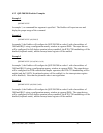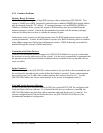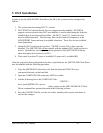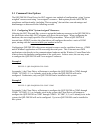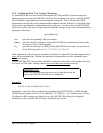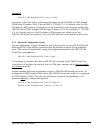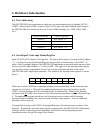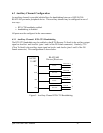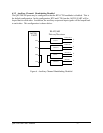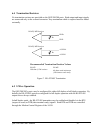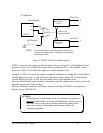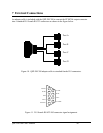
5.3 Common Problems
Invalid I/O Address When Using OS/2 2.1:
PCMCIA Card Services for OS/2 2.1 sometimes fails to supply a valid I/O address when using
"system assigned" resources. Use the "Configuration Manager" program to examine the I/O
address range assigned to the QSP-200/300. If this range does not begin on an even 32 byte
(20H) boundary, the QSP-200/300 will have to be installed using "user assigned" resources to
force a valid configuration.
There have not been any reports of this problem with OS/2 Warp.
Resources Not Available:
When using "user assigned" resources, it is the user's responsibility to ensure the I/O address and
IRQ resources are available. For OS/2 Warp users, the RMVIEW utility may be useful in finding
resource conflicts. Type "rmview /?" at an OS/2 command prompt for details.
When using "system assigned" resources, if the user knows the port number is available then the
system may not have sufficient resources available to configure the QSP-200/300. Again, the
RMVIEW utility provided with OS/2 Warp may be useful in determining the problem.
Regardless of the configuration method, each command line argument specifies the first of four
COM ports for the QSP-200/300. If any of these COM ports are already installed, the Client
Driver will not load.
Parameter Overlapping:
When installing the QSP-200/300, each command line argument specifies the first of four COM
ports. If these arguments overlap, the Client Driver will not load. For example, it is illegal to
specify QSP200.SYS COM3 COM4 because the first argument requests COM3 - COM6 and the
second argument specifies COM4 - COM7.
Insufficient Number Of Command Line Arguments:
The QSP-200/300 command line must contain at least one command line argument for each
QSP-200/300 to be installed.
QSP-200/300 User's Manual 34



